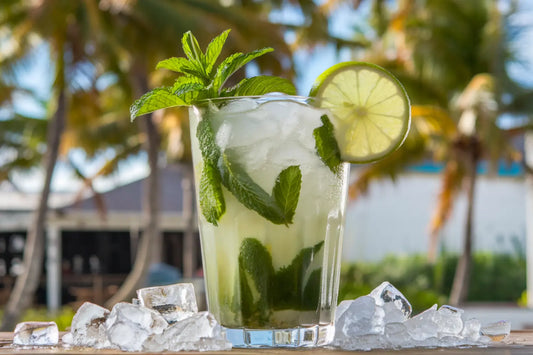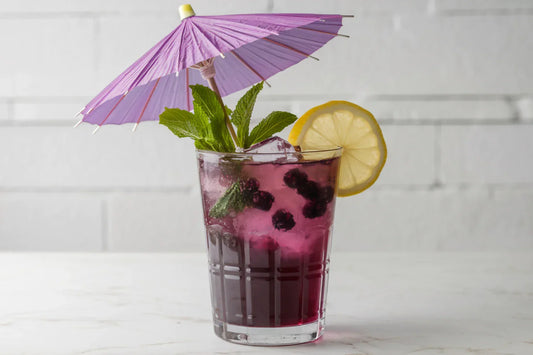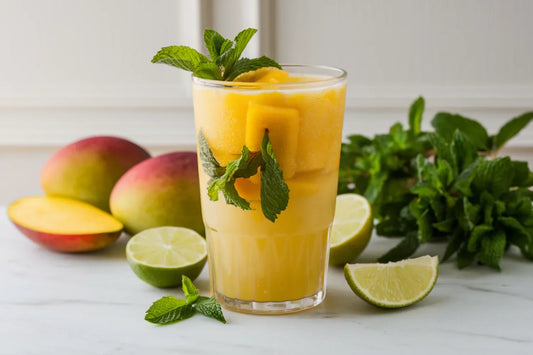Differences Between a Cocktail Shaker and a Mixing Glass
BarNeedWhen it comes to bar tools, the cocktail shaker and mixing glass are two of the most commonly mentioned options. Although both are used for making cocktails, they have significant differences in terms of purpose, design, and the types of drinks they’re best suited for. If you're just getting started in bartending, you might be wondering, “Do I need both, or can I just choose one?” In this article, we will dive into their differences to help you better understand and make the right choice.
Jump to:
Features of the Cocktail Shaker
The cocktail shaker is arguably the most common and essential bartending tool, and you are probably familiar with it. The most common types are the Boston, Cobbler, and French shakers.
- Material: Most cocktail shakers are made from stainless steel, though some are made from glass or plastic. Stainless steel is particularly favored for its durability and excellent thermal conductivity. During shaking, the material rapidly transfers the cooling effect of the ice to the liquid, helping the drink reach the ideal temperature more quickly. Additionally, stainless steel is easy to clean and is well-suited for frequent use.
- Structure: The Boston shaker consists of two metal tins, while the Cobbler shaker has a three-piece design. But generally speaking, they feature a closed structure, which helps create a secure seal when shaking, preventing leaks and spills.
- Mixing Method: The mixing process in a shaker involves shaking the ingredients, which causes the liquid, ice, and other ingredients to collide. This interaction allows them to mix thoroughly in a short amount of time, resulting in a balanced and well-blended taste.
Therefore, when making cocktails like a Mojito or Margarita, which contain juice and syrups, and have more complex ingredients, a shaker is the ideal choice. It effectively helps break up the thickness of syrups and ensures a smoother, more even mix with the juice and spirits.
Features of the Mixing Glass
Due to its simple design, a mixing glass may seem like it can be replaced by any glass, especially for beginners. However, it is, in fact, an indispensable tool in bartending.
- Material: Mixing glasses are typically made from glass or crystal. These materials not only offer an elegant appearance but also allow you to clearly observe the status of the liquid while stirring. Some high-end styles feature cut crystal designs, enhancing both visual appeal and hold to prevent slipping.
- Structure: Designed with a wide opening and cylindrical shape, the mixing glass provides ample space for easy and smooth stirring with a bar spoon. Its walls and base are often thickened, which not only increases its durability but also ensures it remains stable on flat surfaces like countertops or bars, minimizing the risk of movement or tipping during stirring.
- Mixing Method: It uses stirring as its method of combining ingredients. This technique is gentler than shaking, allowing the ingredients to mix thoroughly without introducing excessive air or creating foam. It also prevents over-dilution, helping maintain the cocktail’s clarity and smooth texture.
Thus, when crafting drinks like Negronis or Manhattans, where the delicate flavors of the spirits need to be preserved and not overly diluted, a mixing glass is the ideal tool to achieve the best results.
A Comparison of the Two
Cocktail Shaker
Pros:
- Versatile performance. The shaker tin can sometimes substitute for a mixing glass as a container for simple stirring. Although this approach is not professional, it offers certain efficiency advantages.
- It can quickly dilute and chill the mixture, making it ideal for cocktails that require low temperatures and have complex ingredients.
- It introduces a small amount of air into the drink, giving it a lighter mouthfeel and a denser foam.
Cons:
- It has a bit of a learning curve and requires some experience to use effectively.
Mixing Glass
Pros:
- The gentle stirring method allows for more precise control over dilution, preserving the original flavors of the base spirits.
- Its transparent material enables bartenders to visually judge the mixing process, ensuring the desired level of blending is achieved.
- With its simple design, it’s very easy to use and clean.
Cons:
- Its function is limited to stirring, and it’s not suitable for drinks that require emulsifying or rapid cooling.
Conclusion
By now, you should have a clearer understanding of both tools. While they are both used for mixing, their focuses differ based on the types of drinks they are designed for. A shaker is commonly used for modern, complex cocktails, while a mixing glass is more suited for classic cocktails.
If you primarily make stirred cocktails or mostly shake your drinks, you can choose based on your personal needs. However, if you're a professional bartender or building a fully-equipped home bar, we recommend having both. They don’t serve as direct alternatives to one another, but rather as complementary tools. This complementary relationship allows you to mix drinks in the most professional and efficient way possible, ensuring the best flavor for a variety of cocktails.






